Maschinenkochen -Stromlinie und standardisieren Sie das Kochen mit Touchscreen und industriellem Motherboard.
Branchenhintergrund
Kürzlich, news of JD.com investing 200 million yuan in an AI cooking robot has once again thrust smart dining into the spotlight. According to public reports, the global market for robotic cooking equipment is projected to reach approximately USD 16.044 million by 2026.
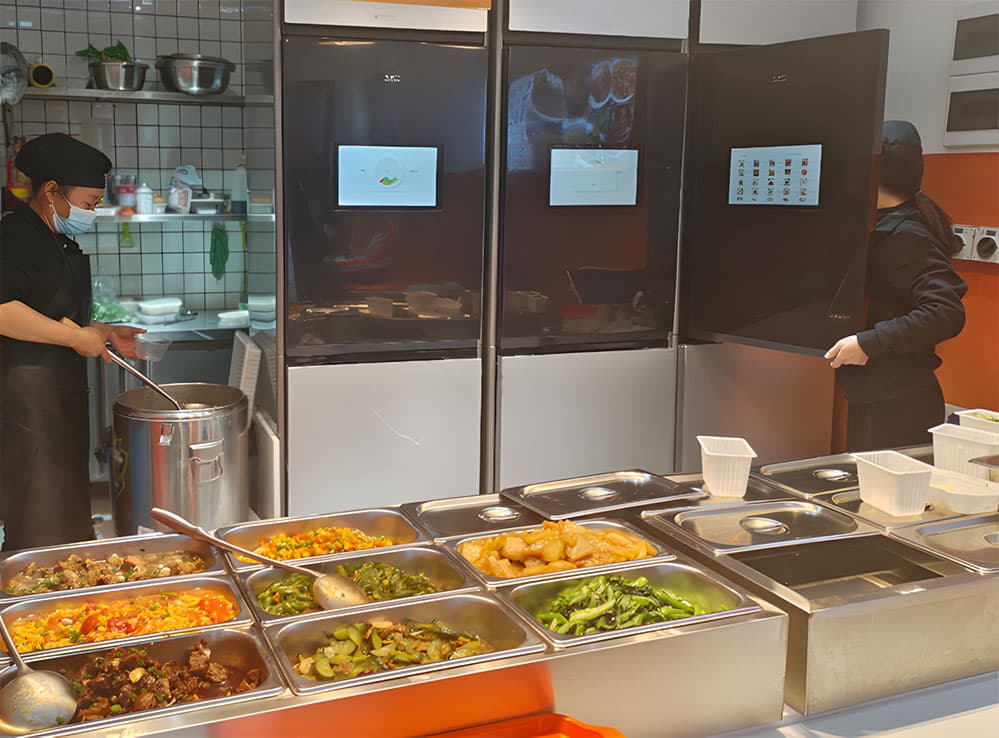
Before we realize it, the “chef” cooking in fast food chains, cafeterias, restaurants, and even home kitchens may no longer be human. The birth of intelligent cooking machines alleviates the “three highs and one low” challenges of the catering industry: high rent, high labor costs, high ingredient costs, and low gross profit. In the past, to improve meal efficiency and service levels, restaurants had to increase the number of chefs, which inevitably added equipment and space costs. Today, driven by advances in AI and digital technology, the catering industry has a new alternative.
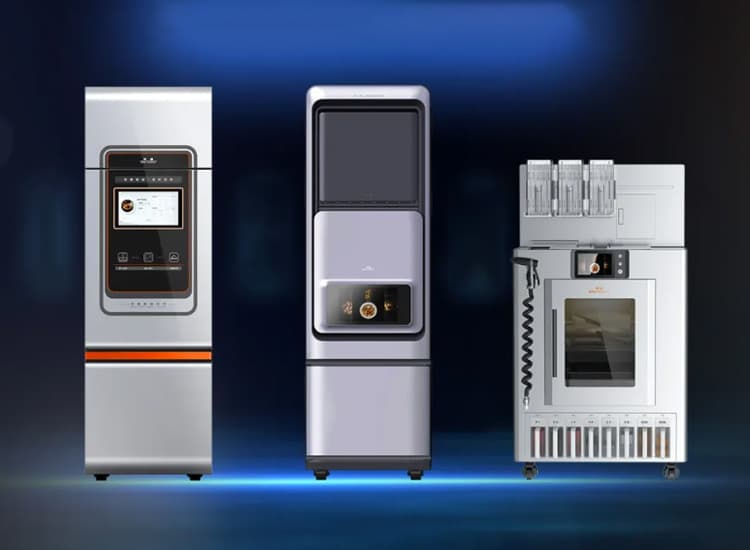
Anwendungsanforderungen
A certain client’s intelligent cooking machine caters to both household and commercial environments. By leveraging AI cooking technology, it standardizes and automates cooking processes and improves efficiency through a digitized “SOP” recipe library, simulating the heat control and pan-flipping techniques of a skilled chef.
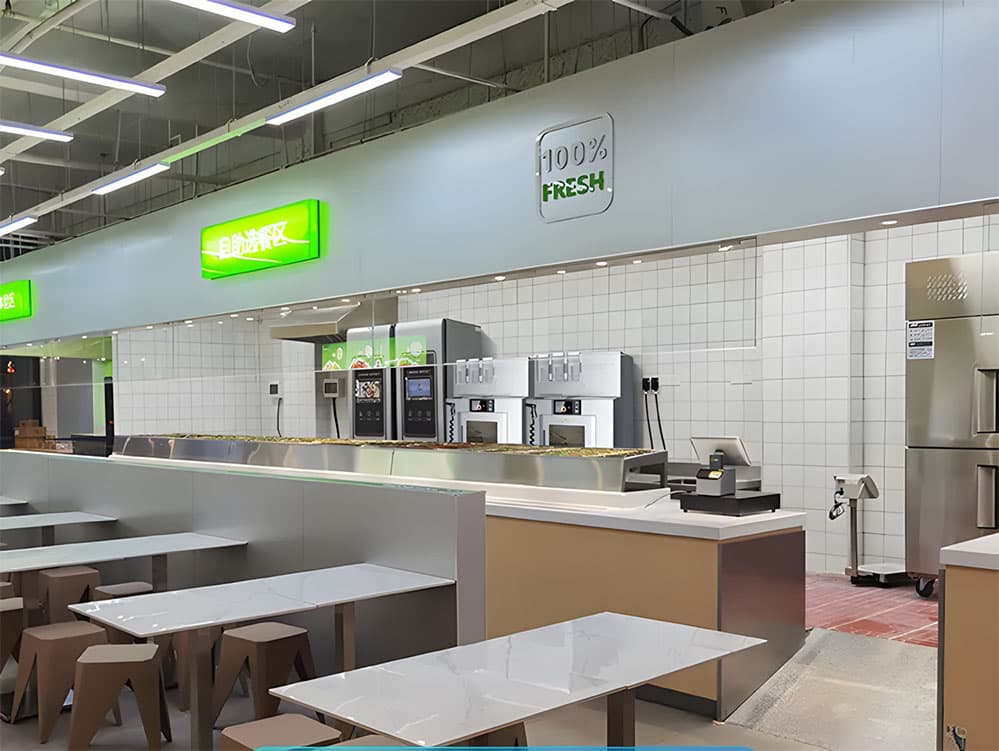
Jedoch, the client’s equipment faces various challenges in real-world scenarios. It requires significant computing power to manage real-time operations such as automated ingredient dispensing, stir-frying, and purification. Gleichzeitig, to optimize kitchen space, the machine has structural constraints on installation. Zusätzlich, the kitchen’s heat, grease, and steam pose a severe test to the equipment’s stability and interaction features.
TouchThink-Produktlösung
To address these challenges, TouchThink provides a “modular” product solution, consisting of the TouchThink CX3568 industrial control motherboard and an 8-inch HMI human-machine interface.
1. Modular Structure for Space Optimization and Cost Advantage
The client’s cooking machine occupies only 1-2㎡ of kitchen space, making the internal design highly compact. TouchThink’s embedded modular installation solution offers flexible structure with minimal space usage, allowing room for other integrated equipment/modules. This modular structure not only enhances the cooking machine’s usability but also reduces the client’s material costs, such as casing.
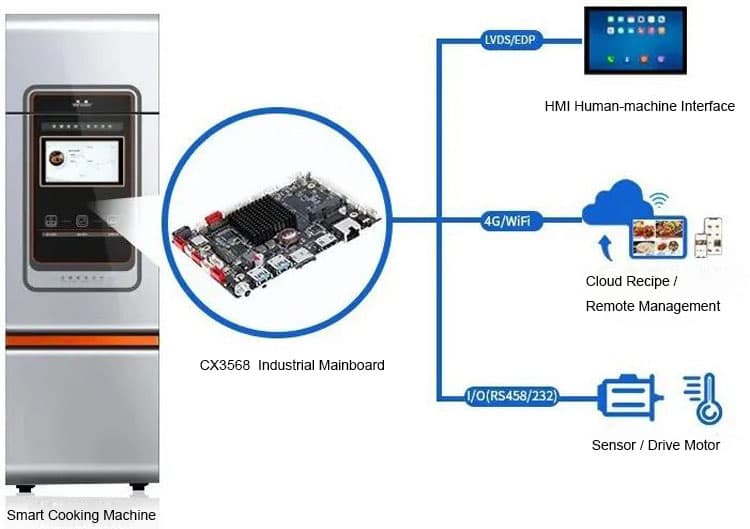
2. High-Performance Computing for Standardized and Automated Food Service
Der TouchThink CX3568 industrial motherboard, equipped with the Rockchip® RK3568 chip and a quad-core ARM Cortex-A55 processor running at 2.0GHz, delivers high performance with low power consumption. It can rapidly process complex calculations and manage data from multiple infrared temperature sensors, ensuring standardized and automated operation in the cooking machine.
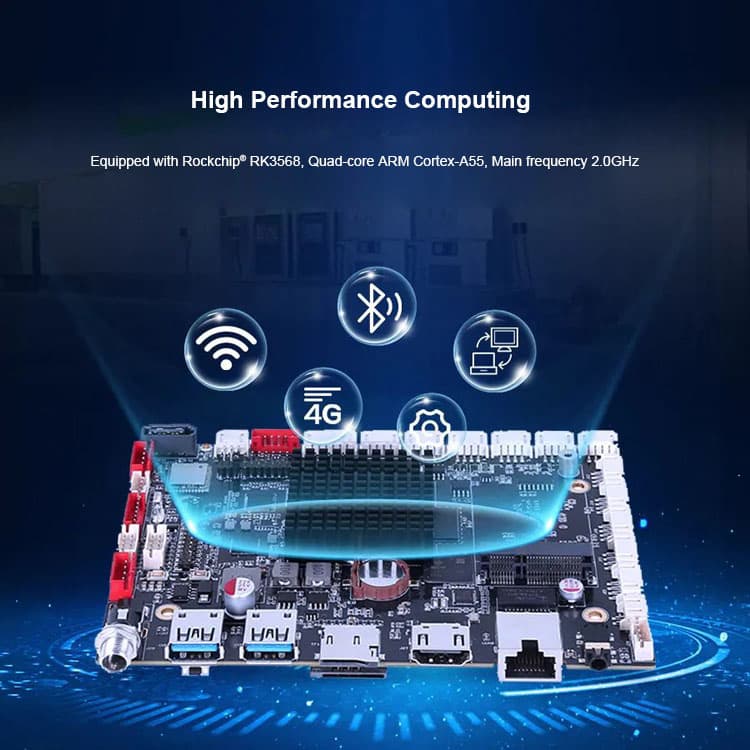
3. ARM Architecture with I/O Support for Compatibility and Expansion
The CX3568 industrial motherboard uses an ARM architecture that supports Android, Linux, Ubuntu, Debian, and other operating systems, ensuring stable compatibility with the client’s custom cooking software and programs. The open-source nature of Android, combined with the motherboard’s rich I/O capabilities, provides a strong foundation for future upgrades and functionality expansion.
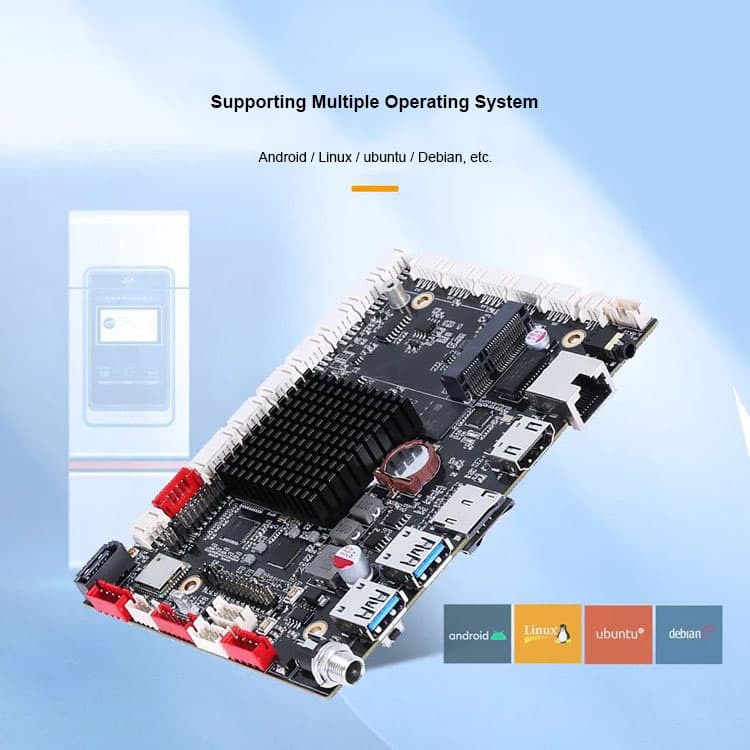
4. Reliable Hardware Performance for Versatile Adaptability and Long Lifespan
The CX3568 is equipped with Gigabit-LAN, 4G, und WLAN 6 network modules, supporting digital management, multifunctional connectivity, and remote operations for the cooking machine. Zusätzlich, TouchThink’s industrial control products undergo rigorous testing for temperature extremes, electromagnetic compatibility, Vibration, and static interference, ensuring long-term stability and reliability across varied environments.
TouchThink’s Value-Driven Solutions
With independent R&D and design capabilities, TouchThink can provide flexible and highly compatible solutions tailored to actual needs, helping clients enhance product value and reduce long-term usage costs.
